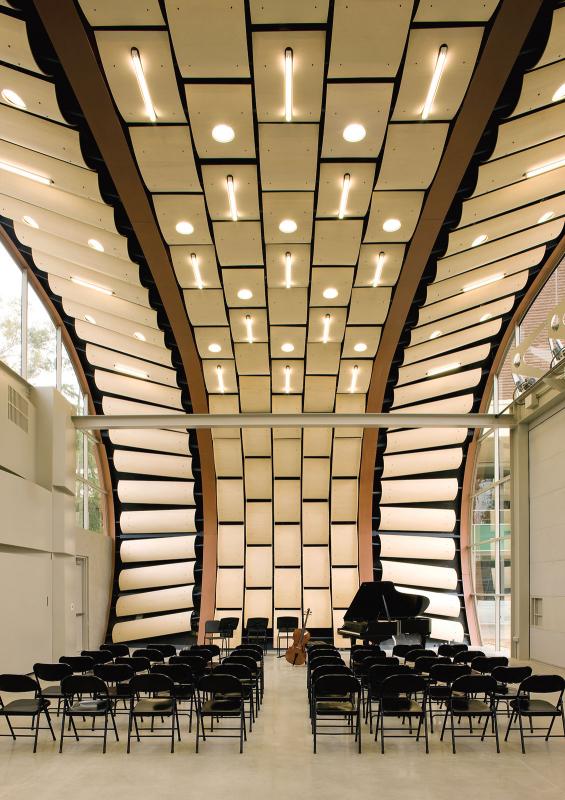Wild Beast Music Pavilion
An award-winning music pavilion that can transform from a recital hall to an outdoor amphitheater that can accommodate crowds ranging from a few dozen to over a 1,000.
Project Details
2013 Merit Award, AIA California Council Design Awards
2010 Excellence in Structural Engineering, NCSEA
2010 Notable Performance Space, Architype Review
A Structural Design Influenced By Resonance and Acoustics
When the California Institute for the Arts looked to design a new space for its growing Herb Albert School of Music, they wanted a dual-purpose facility that could offer classroom and performance space for both CalArts students and the Santa Clarita Valley community. The result? An award-winning music pavilion that can transform from a recital hall to an outdoor amphitheater that can accommodate crowds ranging from a few dozen to over a 1,000.
We provided structural design services to Mithun │Hodgetts + Fung for this project that Flavorwire called one of the world’s most beautiful outdoor theaters alongside the Hollywood Bowl in Hollywood, California, and Cloud Tower in Vienna, Austria. The project was completed in 2009.
 Wild Beast Music Pavilion in Valencia, California.
Tom Bonner Photography
Wild Beast Music Pavilion in Valencia, California.
Tom Bonner Photography
Highlights
-
The acoustically optimized space uses wood, glass, copper and concrete to help amplify and reflect sound throughout the space and to an outside audience.
-
The 3,200-square-foot, single-story structure houses classroom / performance and storage areas and features 46-foot-wide hangar doors that convert the space into an amphitheater.
-
The project required close collaboration with the architect to develop a special roof framing system that expresses the structural steel members and details, and allows the floating acoustical enclosure to have minimal thickness.
-
Four parallel arched 14-foot-wide flange sections achieve a 60-foot roof span. Frame action is utilized where the roof is curved, transitioning to composite action where the roof flattens out.
-
The pavilion’s slender form is clearly legible in the structural steel members and their connections, both inside and outside of the space.
At quick glance it’s an elegant, simplistic wedge of glass, copper and concrete. But inside, it’s wired to the hilt and odd-shaped, with four uneven walls and a deceptively complicated infrastructure. Each bulging curve of wood or patch of glass serves a functional purpose: directing and reflecting sound.






